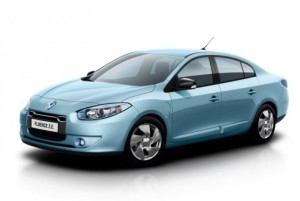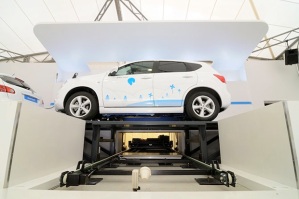 Getting drivers to switch from gasoline cars to eco-friendly electric vehicles has long been a goal of policy-makers and governments. But all attempts at attacking the mass market have largely failed. Despite rapid advances in battery technology, electric vehicle’s limited driving range and high up-front costs have all held back mass adoption.
Getting drivers to switch from gasoline cars to eco-friendly electric vehicles has long been a goal of policy-makers and governments. But all attempts at attacking the mass market have largely failed. Despite rapid advances in battery technology, electric vehicle’s limited driving range and high up-front costs have all held back mass adoption.
Some companies like Tesla Motors, have invested heavily in improving electric vehicle technology, but have not met with much success. But one company, Better Place took a different route and has the best chance in a generation at mass-adoption of electric vehicles. Rather than invest in technological innovation, it decided to take a decidedly different route, innovating the operating model around electric vehicles– the renaissance innovation route.
Better Place tackles the two key problems with adoption of electric vehicles– the high upfront cost, and the limited range offered.
Electric Batteries increase the up-front cost of a family sedan by about US $ 10,000. While this pays-off over the long run with lower running costs (on account of cheaper electricity as compared to gasoline), but this also means that customers must make an up-front investment and hope for realizing some returns from this investment over a period of time. In the process, the customers end up bearing some risk. Better Place tackles this by offering the customers a discount on the cost of the vehicle but then charging the customers for each mile that they drive. This means customers do not need to make as much of an upfront investment as with a regular electric vehicle, the up-front cost is comparable to that of a gasoline vehicle. However, now some of the saving in driving costs are instead transferred to Better Place. This means customers do not have any exposure exposure to risks and they end up paying the same as they would for an electric vehicle. BTW, this is no different than the power by the hour type contracts pioneered by Rolls Royce that we blogged about a few days back.
To tackle the limited range of electric vehicles, Better Place intends to build a network of battery switching stations , where drivers can swap their depleted batteries with new fully-charged ones. The stations, function like gas-stations, a car pulls up and a quick mechanism swaps the cars battery pack. Better Place hopes that with a vast network of stations, it can ensure that Better Place electric vehicles effetctively have a limitless range.
This and other parts of Better Place’s innovative model are described in a recent teaching case that we wrote. Better Place is still in its infancy and while the new operating model definitely eliminates many of customer-side barriers to adoption, it remains to be seen if this model is profitable. In some of our ongoing research, we are trying to answer this question using tools from risk analysis and operations management. We hope to share the results here soon.
The case of Better Place illustrates that some particularly vexing business problems may be better tackled by rethinking the operating model rather than just focusing on technological advances. It illustrates that where technology may fall short, renaissance innovation may fill the void and help make the world a better place.


what if it gets adopted on a larger scale
what if the movement of vehicles is ina particular direction(eg in cities people would be moving more to an industrial area in the morning on a work day)
Storage of batteries?
but not a bad idea overall
I agree that there are opportunities for different business and operation models. For example, I came across that the Ellen MacArthur Foundation suggested how EV’s may be able to stop at a battery change instead of plugging in for hours in the future. That may resolve the all-important shortcoming of power for EV’s. Sure there are issues to hash out. The batteries may need to be on a subscription basis. But that’s also why things can get interesting!